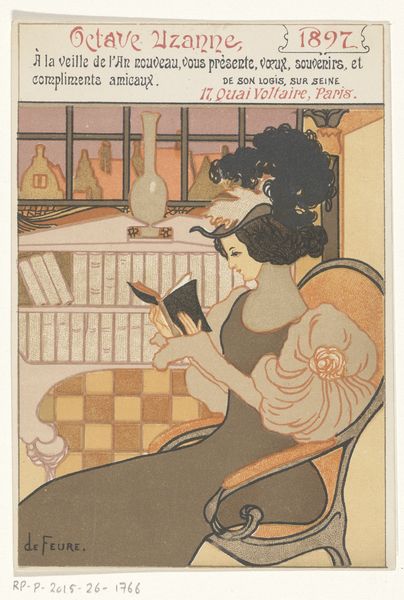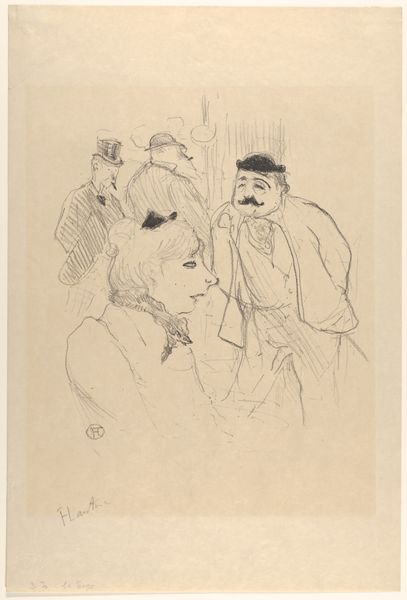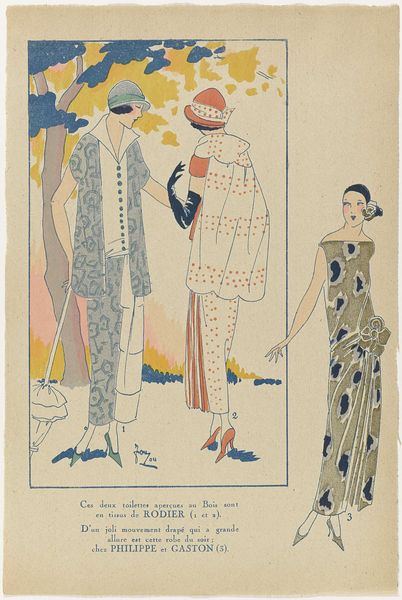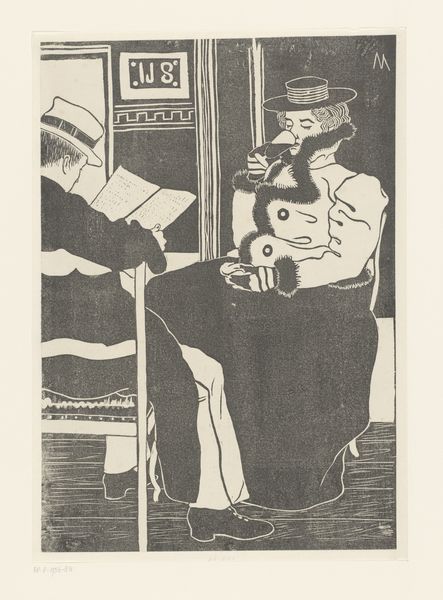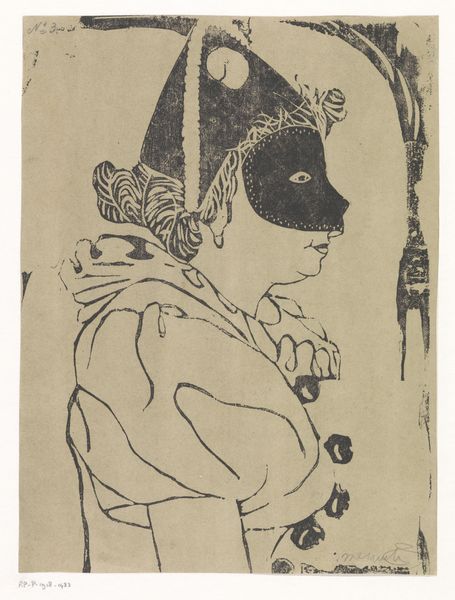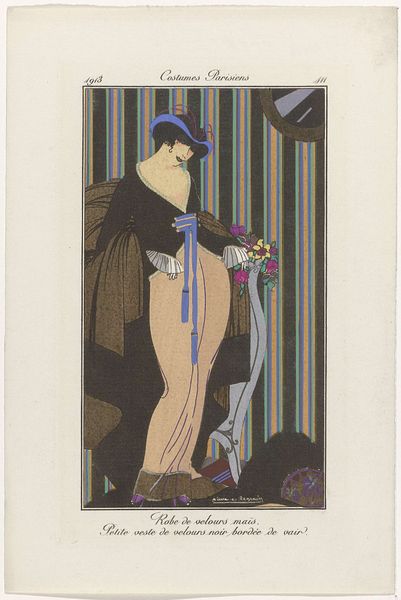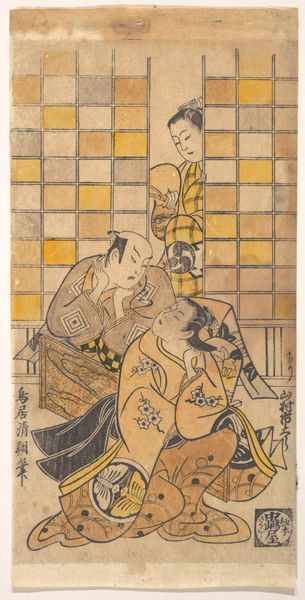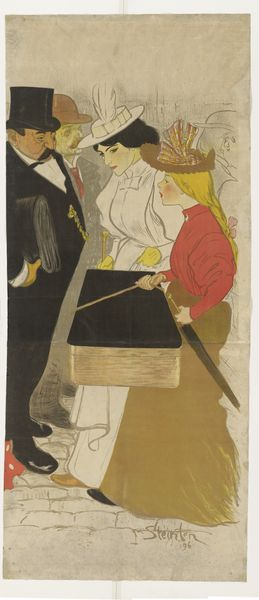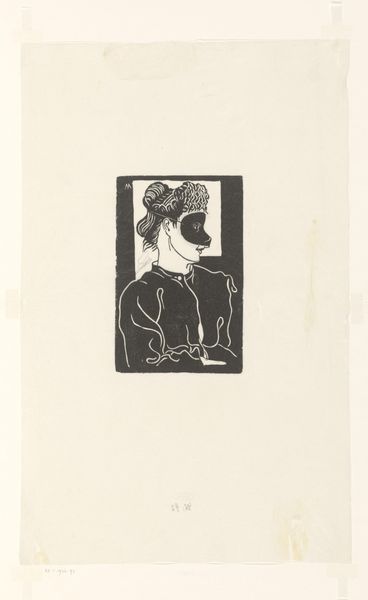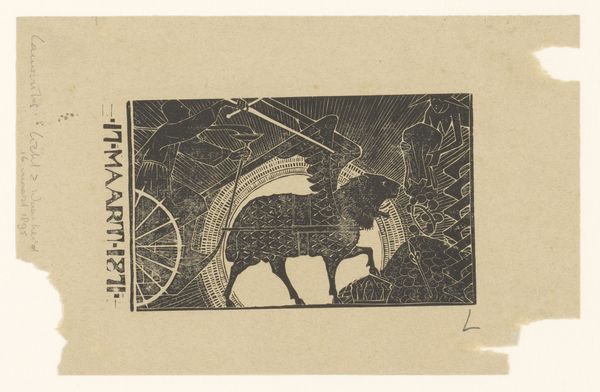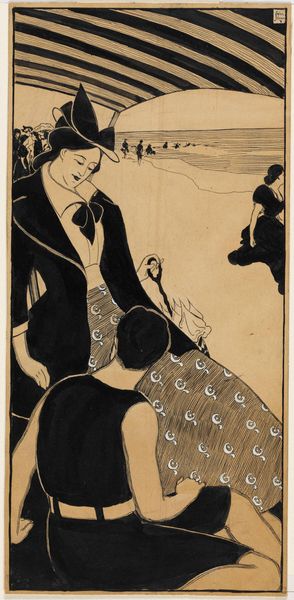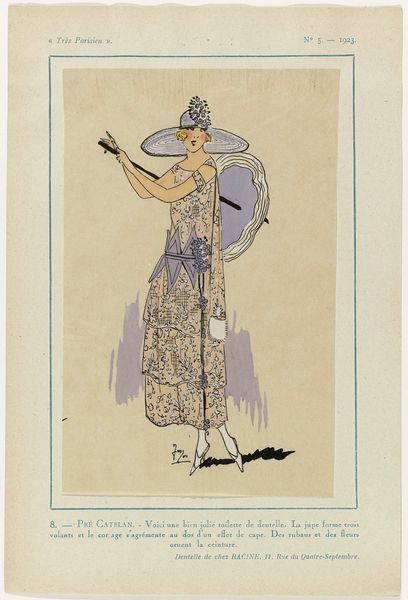
Dimensions: Image: 18 1/2 × 14 11/16 in. (47 × 37.3 cm) Sheet: 23 5/8 × 18 7/8 in. (60 × 48 cm)
Copyright: Public Domain
Henri de Toulouse-Lautrec's "The Englishman at the Moulin Rouge" is a lithograph, a printmaking technique using a flat stone or metal plate. It's a quintessentially modern medium, allowing for the rapid production and distribution of images. Look closely, and you'll see the characteristics of this process in the artwork's appearance, such as the flat planes of color, the bold, graphic lines, and the overall sense of immediacy. The lithograph's inherent qualities of reproducibility made it ideal for capturing the fleeting moments of Parisian nightlife, and for circulating these images widely. The artist would have drawn directly onto the prepared surface, and then used chemical processes to fix the image before printing. This allowed him to achieve a sense of spontaneity and directness, perfectly suited to capturing the energy and excitement of the Moulin Rouge. It’s no accident that Toulouse-Lautrec, working at the dawn of mass media, embraced this technology. By understanding the materials, making, and context of this artwork, we can appreciate how it challenges traditional distinctions between fine art and popular culture.
Comments
No comments
Be the first to comment and join the conversation on the ultimate creative platform.
